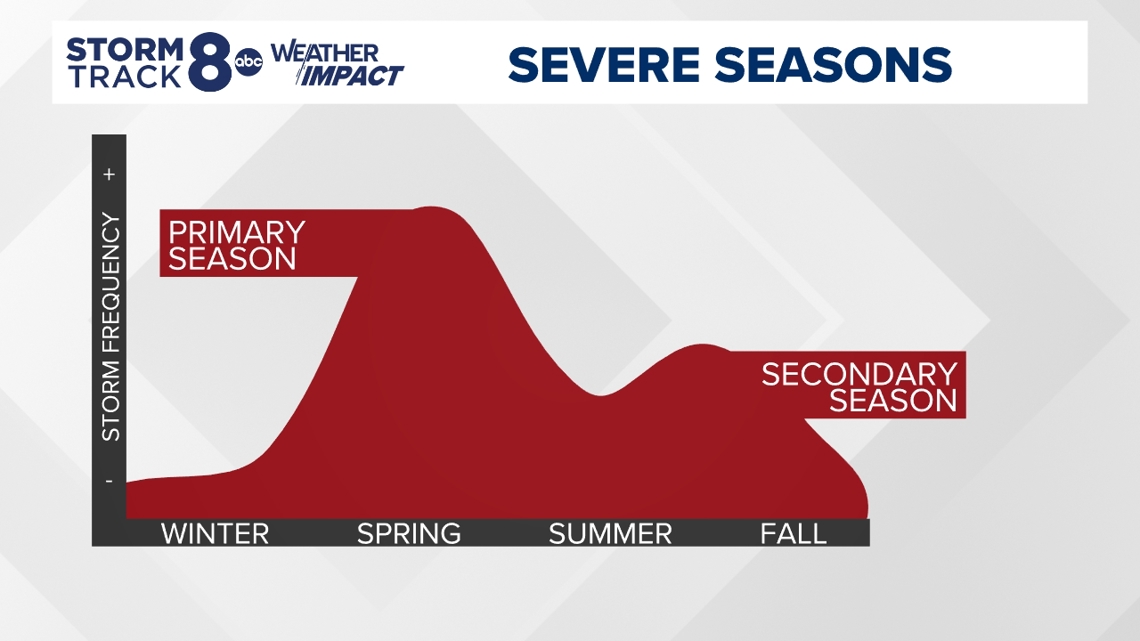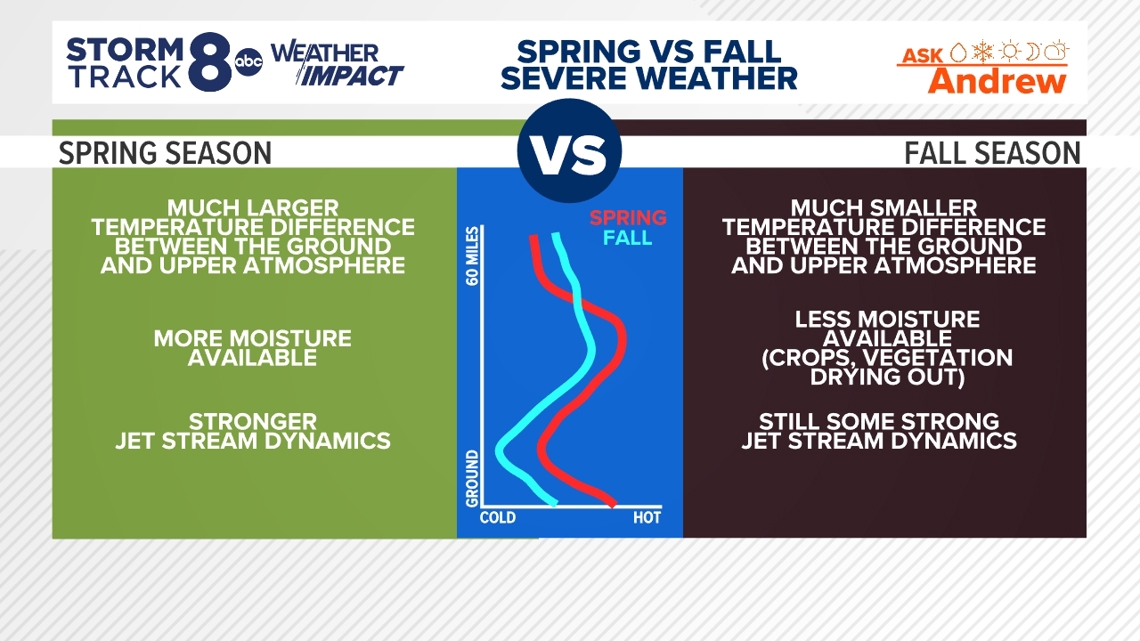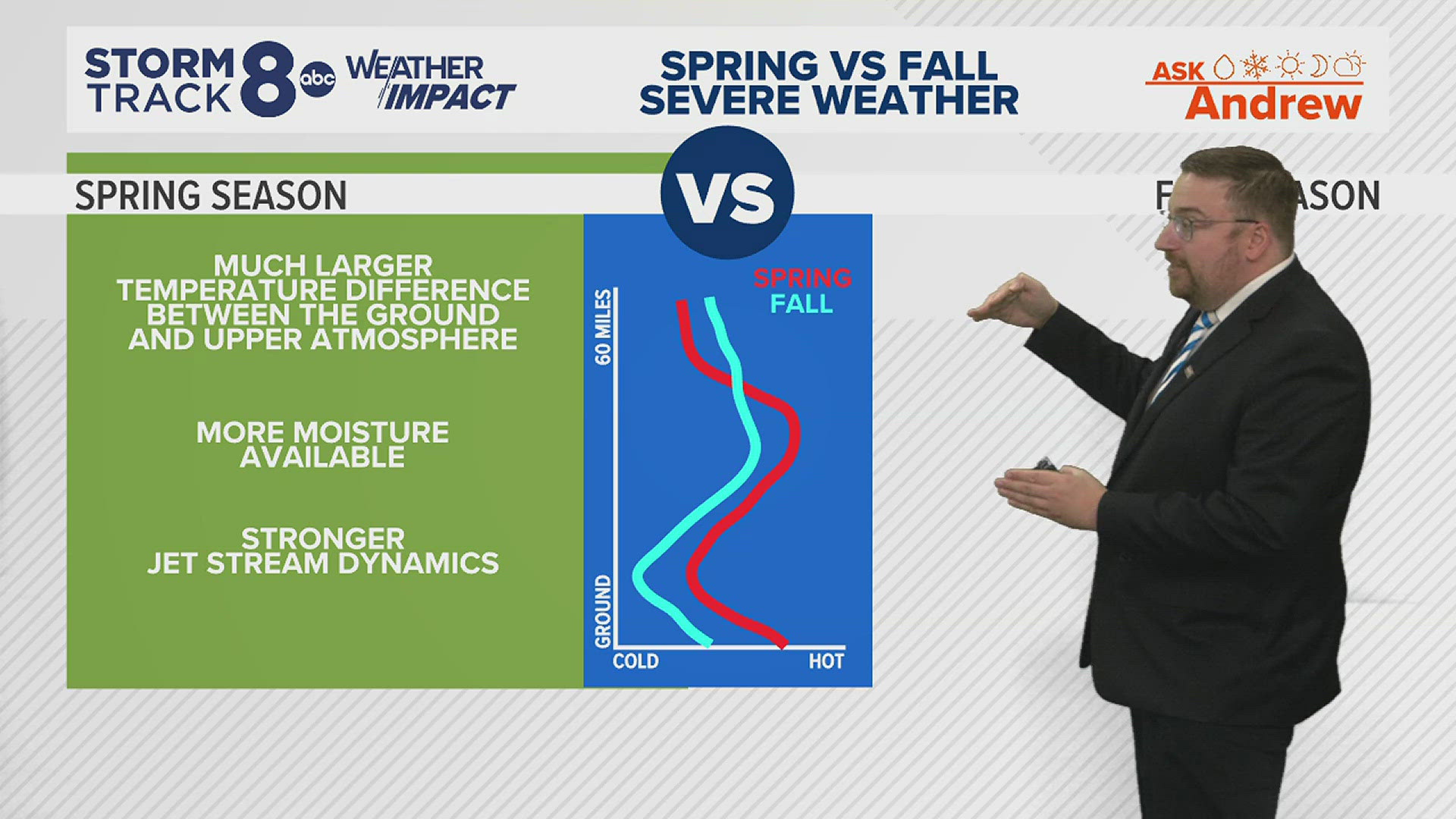MOLINE, Ill. — Meteorological Fall is only a couple of short weeks away and that means we'll likely see another rise in opportunities for strong to severe storms. Unlike the spring severe weather season, the fall severe weather season is typically less intense and less frequent. Abigail from Davenport asked why the two seasons are different. Let's dig in!
A tale of two seasons
This year has been exceptionally busy in terms of severe weather. As of August 16, 2024, this year has racked up the second-highest tornado count on record across the United States. We have certainly not been neglected here in the Quad Cities with multiple tornadoes touching down this year.


No surprise that severe weather occurs in the spring with that classic collision of the airmasses that we often talk about. Well-established cold air begins to retreat as warmer air pushes in from the south. The two don't play nice very often and Mother Nature needs a way to balance this difference in temperature and energy, that being thunderstorms!
To see why exactly one season is more intense than the other, we have to go higher up in the atmosphere and examine a few more ingredients here on the ground.
Changes in the atmosphere
The spring season usually features a much larger temperature difference between the ground and the upper levels of the atmosphere. Near the ground, more warmth is building in while stubborn cold air lingers in the atmosphere. This difference in temperature drives a lot more upward lift and motion, leading to intense storms. There's also more moisture available. Remember, from Storm Track 8 University that warmer air is capable of holding a lot more moisture compared to cooler air.
Strong jet streams also usually accompany spring storms since they also act as an energy balance mechanism.


Switching to the fall season, a few more differences become clearer. For one, the temperatures near the ground are certainly cooler, leading to less of a temperature difference between that and the atmosphere above. There's also typically less moisture. Plants are not performing evapotranspiration (or evaporating water into the air) as much as they would in the late spring/early summer. In this case, the severity of any storms would be determined more by the strength of a front or accompanying jet stream.
Both seasons can certainly produce severe thunderstorms but, you'll usually see the worst of the worst during the spring season.
Have a question that you would like me to answer for an upcoming Ask Andrew segment? Submit it, here!
WRITE

